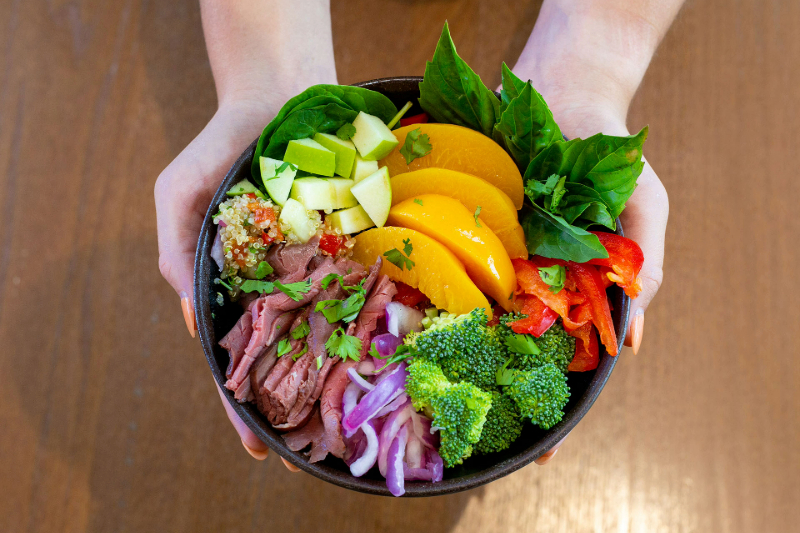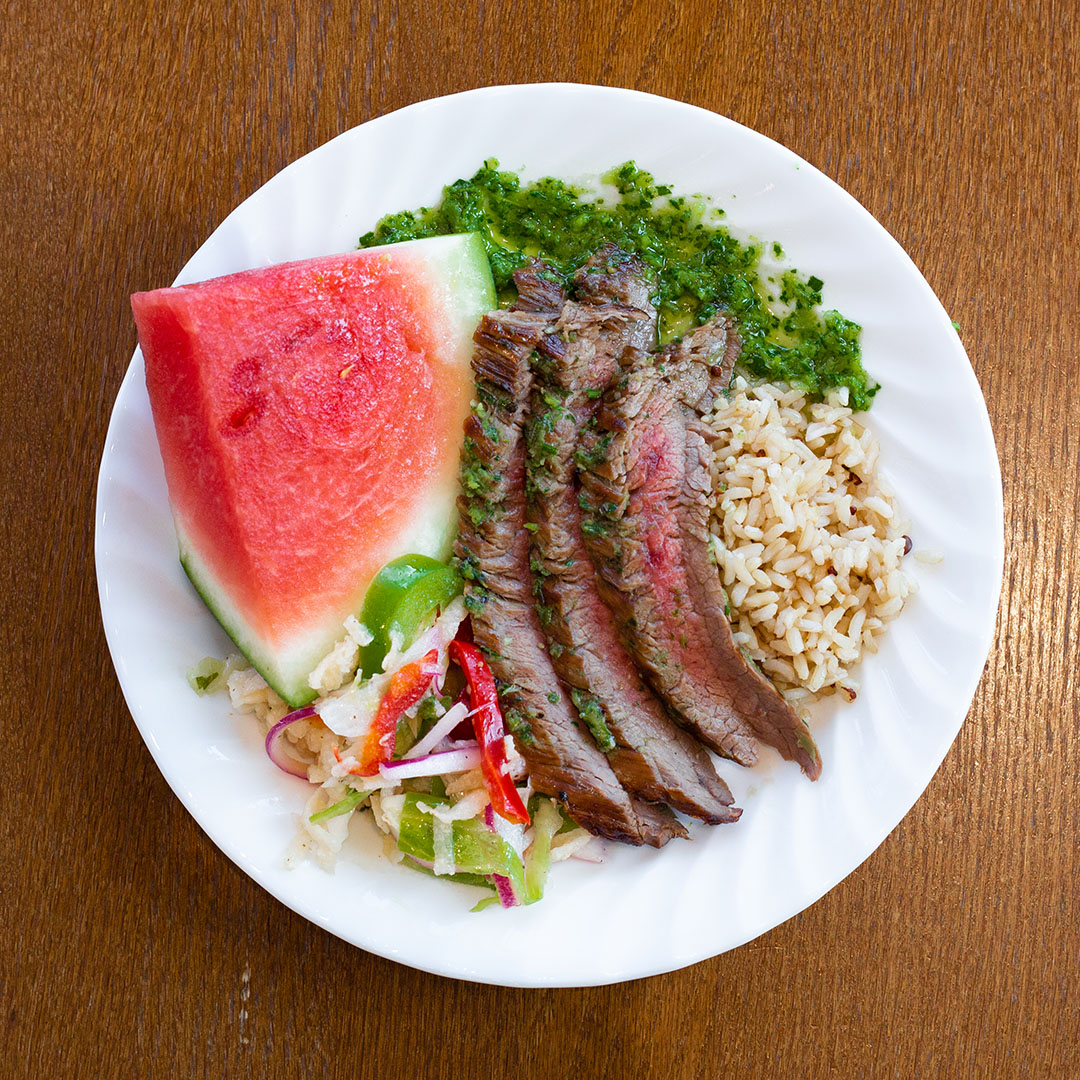
When you hear the phrase, “You eat with your eyes first,” you might think of a pretty plate of food, or perhaps you imagine a chef with excellent plating skills. Research has shown that eating is a multisensory experience with significant influence on both appetite suppression and stimulation.6
When food is presented in an aesthetically pleasing manner you are more likely to judge it positively than if the opposite occurs.
 There are multiple factors that impact our desire to eat, including mood, environment, and food presentation. Food presentation considers color, arrangement, plating, neatness, portion sizes, balance, and even luminance to create a beautiful representation that influences your desire to eat that food. This series explores the relevance of these details and provides different tips and fun facts for your eating journey!
There are multiple factors that impact our desire to eat, including mood, environment, and food presentation. Food presentation considers color, arrangement, plating, neatness, portion sizes, balance, and even luminance to create a beautiful representation that influences your desire to eat that food. This series explores the relevance of these details and provides different tips and fun facts for your eating journey!
You may have noticed through your own experiences that your appetite increases when eating food that looks more appealing. The appeal doesn’t come from food-prep alone, but also from plating.
Plating is a multifactorial influence that involves balance, arrangement, and plate color.2,3 A study done by Ayaz et al., found increased consumption amongst red and black plates when compared to white plates.3 This means that if you are trying to make something look more delicious, you could try putting it on a black or red plate and see if it piques your appetite.
Arrangement and balance involve both neatness and organization. When food was placed towards the center of a plate instead of towards the outside, it was considered more appealing.2

Another study also analyzed organization. When comparing neat vs. messy presentations, researchers found that neat presentations were more desirable than messy presentations.4 For example, when setting up your plate in the dining commons, try arranging your choices in a balanced and neat way, like lining your bowl of yogurt with banana slices, instead of throwing them in without thought.
In another experiment, salads were found to be more attractive and rated higher in quality when they were designed to imitate a painting by Wassily Kandinsky, a Russian artist who specialized in abstract art that involved lots of colorful compositions. Researchers found artistic influences seemed to enhance the flavor of the salad.1
There’s benefit in taking time to create your meals and putting thought into their presentation. The visual stimuli you create can promote appetite and encourage eating.
This kind of practice is a great way to increase healthy eating patterns. For example, if you spend time organizing a display of vegetables or fashion an intriguing arrangement of fruits, you might find yourself more excited to eat your fruits and vegetables!
Join us next week as we get into more detail about food and colors, and discuss how certain combinations increase appetite, while others may deter it.
References:
- Michel, C., Velasco, C., Gatti, E. et al. (2014). A taste of Kandinsky: assessing the influence of the artistic visual presentation of food on the dining experience. Flavour 3, 7 https://doi.org/10.1186/2044-7248-3-7
- Zellner, D.A., Lankford, M., Ambrose L., Locher, P., (2010) Art on the plate: Effect of balance and color on attractiveness of, willingness to try and liking for food. Food Quality and Preference, 22,575-578. https://doi.org/10.1016/j.foodqual.2010.02.007.
- Akyol, A., Ayaz, A., Inan-Eroglu, E., Cetin, C., & Samur, G. (2018). Impact of three different plate colours on short-term satiety and energy intake: a randomized controlled trial. Nutrition journal, 17(1), 46. https://doi.org/10.1186/s12937-018-0350-1
- Zellner, D., Siemers, E., Teran, V., Conroy, R., Lankford, A., Agrafiotis, A., Ambrose, L. Locher, P., (2011) Neatness counts. How plating affects the liking for the taste of food. Appetite, 57 (3)
- Zellner, D., Loss, C., Zearfoss, J., Remolina, S., (2014) It taste as good as it looks! The effect of food presentation on liking for the flavors of food. Appetite(77) 31-35
- McCrickered, K., and Forde C.G. (2015) Sensory influences on food intake control: moving beyond food palatability. Obesity Reviews(17)18-29

